- What is a Fixed Bridge?
- The Floating Bridge Explained
- Should You Buy A Guitar With A Floating or Fixed Bridge?
An electric guitar’s bridge plays a major role in the sound, feel, stability and maintenance of the instrument. The bridge determines the access you have to particular techniques like vibrato flutters and divebombs. They also contribute to the comfort of your picking hand and impact the ease at which you can carry out string changes. Just as importantly and quite often overlooked, they drastically alter the guitar’s visual appeal – the bridge could swing you on whether you love the classic look of the floating bridge on a Stratocaster, the luxury style of a Bisgby tremolo, the shred machine with a Floyd Rose, or the simplicity of a fixed bridge rhythm monster.
There is no one best guitar bridge. This choice solely comes down to your individual preference and needs. There’s also a lot of subsections within bridge types and we’ll touch on these too, as various manufacturers have their own unique takes on bridge design.
What is a Fixed Bridge?
Also known as a hardtail, fixed bridges are screwed into the body of the guitar and keep the strings resting in place on top of saddles (see below for an example). This straightforward bridge design is considered a standard appointment on most electric guitars outside of the iconic Fender Stratocaster. The very first Broadcaster, which later became the Telecaster, featured a three-saddle bridge. This set the trend for guitar bridge design as it is incredibly simple, easy to produce and keeps moving parts to an absolute minimum. The only parts you can move are the saddles which allow for intonation tweaking.
The classic fixed bridge accommodates the functionality of ball end guitar strings. Keeping the ball ends in place in this system are small holes only wide enough for the string to pass through – located either at the bridge tailpiece itself or from the back side of the guitar body. From there, they loop over the saddle, across the fretboard and up to the tuners where the strings are wound (or locked if a guitar in fitted with locking tuners) in place.
Fender and Gibson later adopted a six saddle bridge – one saddle for each string – allowing players to adjust intonation on a string-by-string basis. Gibson’s Les Paul Tune-O-Matic (TOM for short) meant they didn’t even need to drill holes into the body of the guitar. Instead, you slide the string through a tailpiece mounted on top of the guitar body.
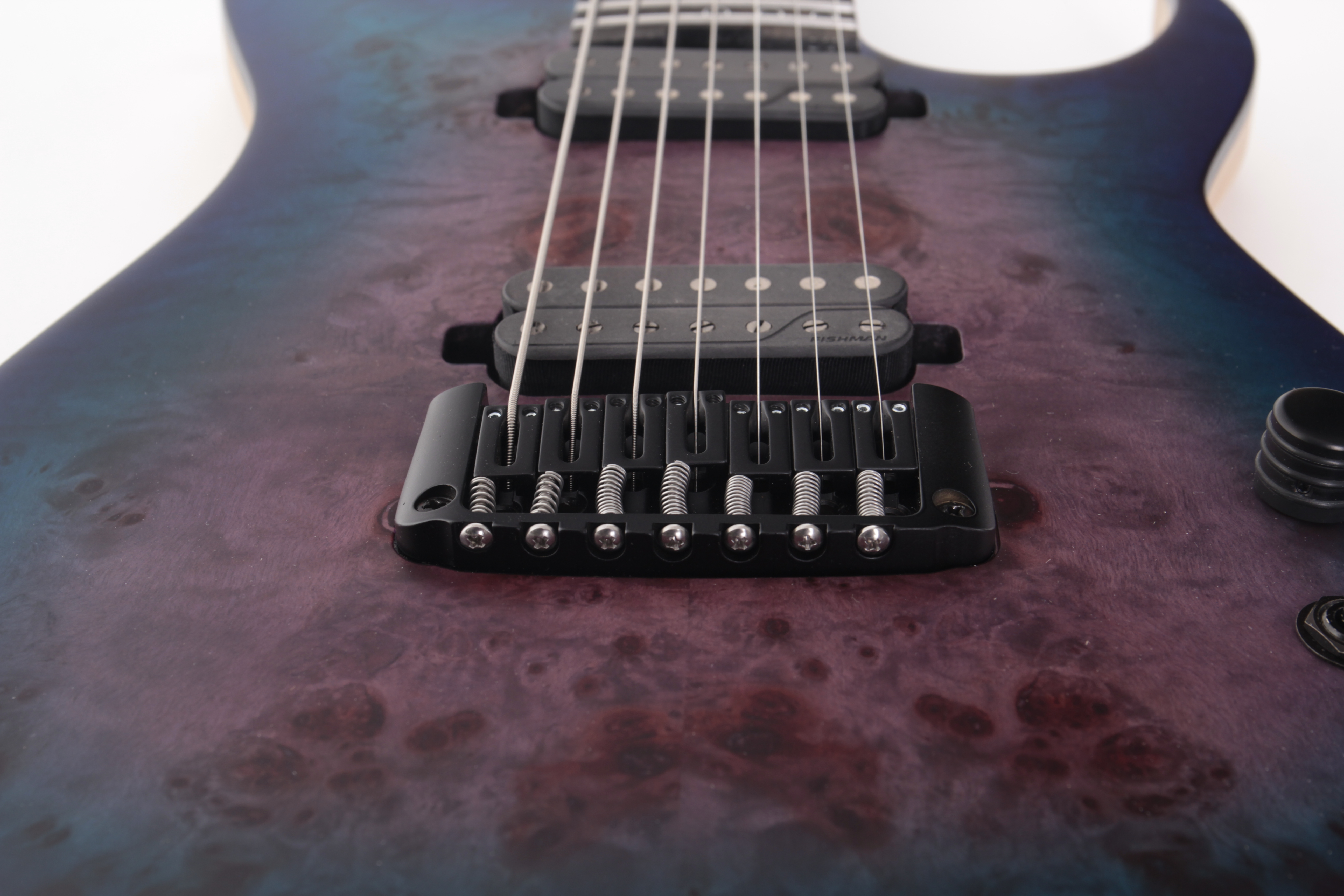
Pros of a Fixed Bridge
Fixed bridges allow for simple restringing even for the most inexperienced of players. You really can’t go wrong sliding a string through a hole and resting it on top of the saddle. They also make for easy intonation fixes as you’re able to adjust the saddle position with a screwdriver.
The fixed bridge limits longitudinal string movement, meaning the strings keep stable when performing bends and vibrato. This is especially useful for playing styles of music with lots of extreme pitch-changing techniques.
Fixed bridge guitars are almost always more affordable then their floating bridge counterparts. Aftermarket upgrades are readily available for fixed bridge guitars and often do not require modification to your instrument.
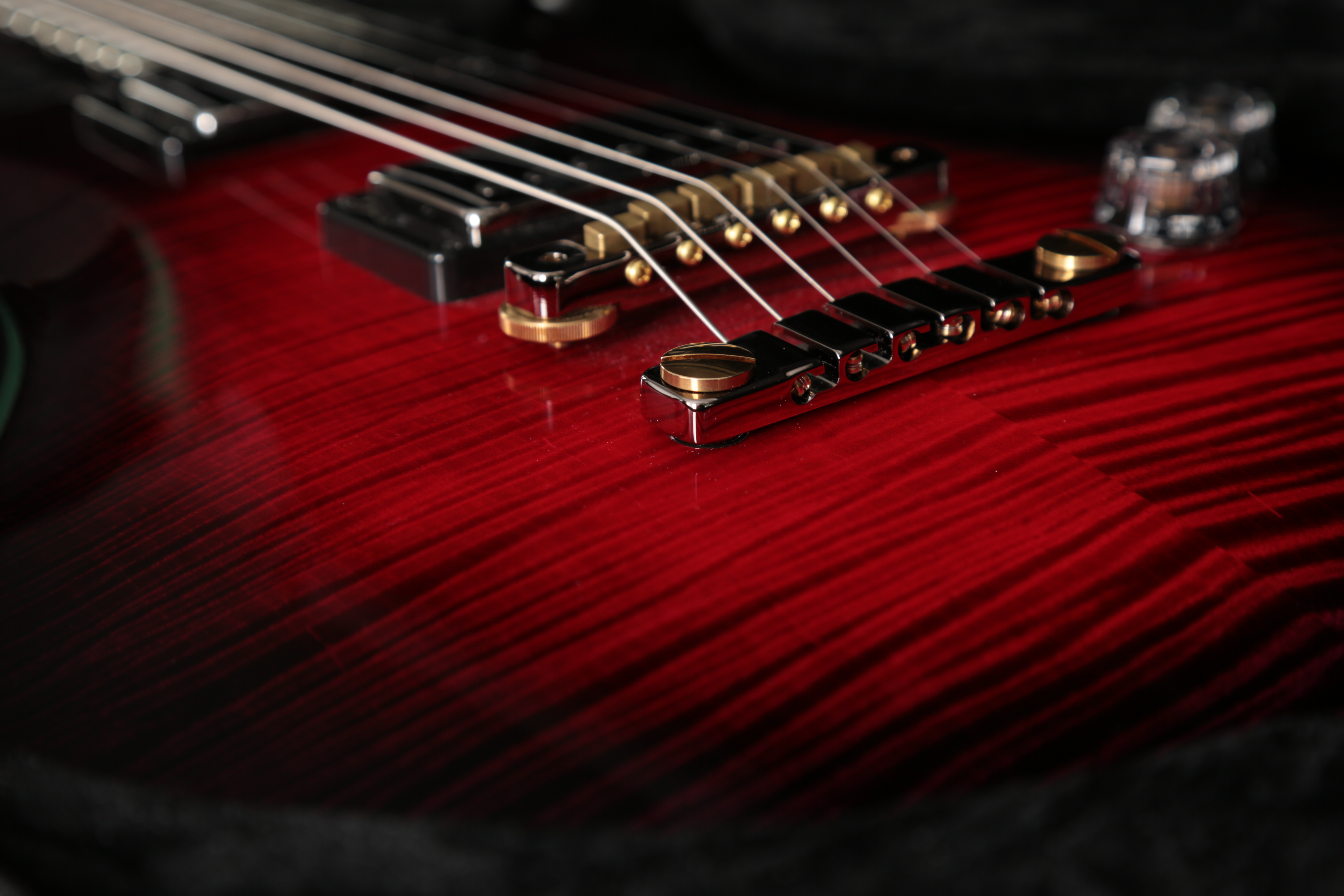
Cons of a Fixed Bridge
No matter how good your fixed bridge, you’ll need tuners and a nut of the same quality to limit string slippage. In many cases, hardtail guitars will also be equipped with locking tuners to keep the strings tightly in place at the headstock. If you have a guitar with below par hardware, it won’t stay in tune very long, no matter the quality of the bridge.
Some hardtails are hit-or-miss on comfort for the picking hand. Ashtray bridges that are almost paired exclusively with vintage style Telecaster guitars may dig into the side of your hand. Bridges that sit quite far up the body like on a Gibson Firebird may become uncomfortable after a playing for extended periods of time, but you might consider this an issue isolated to this particular guitar.
Lastly, and the biggest reason you may avoid a fixed bridge in the end, is that you don’t get the same creative tremolo options as you do with a floating bridge – but more on that later.
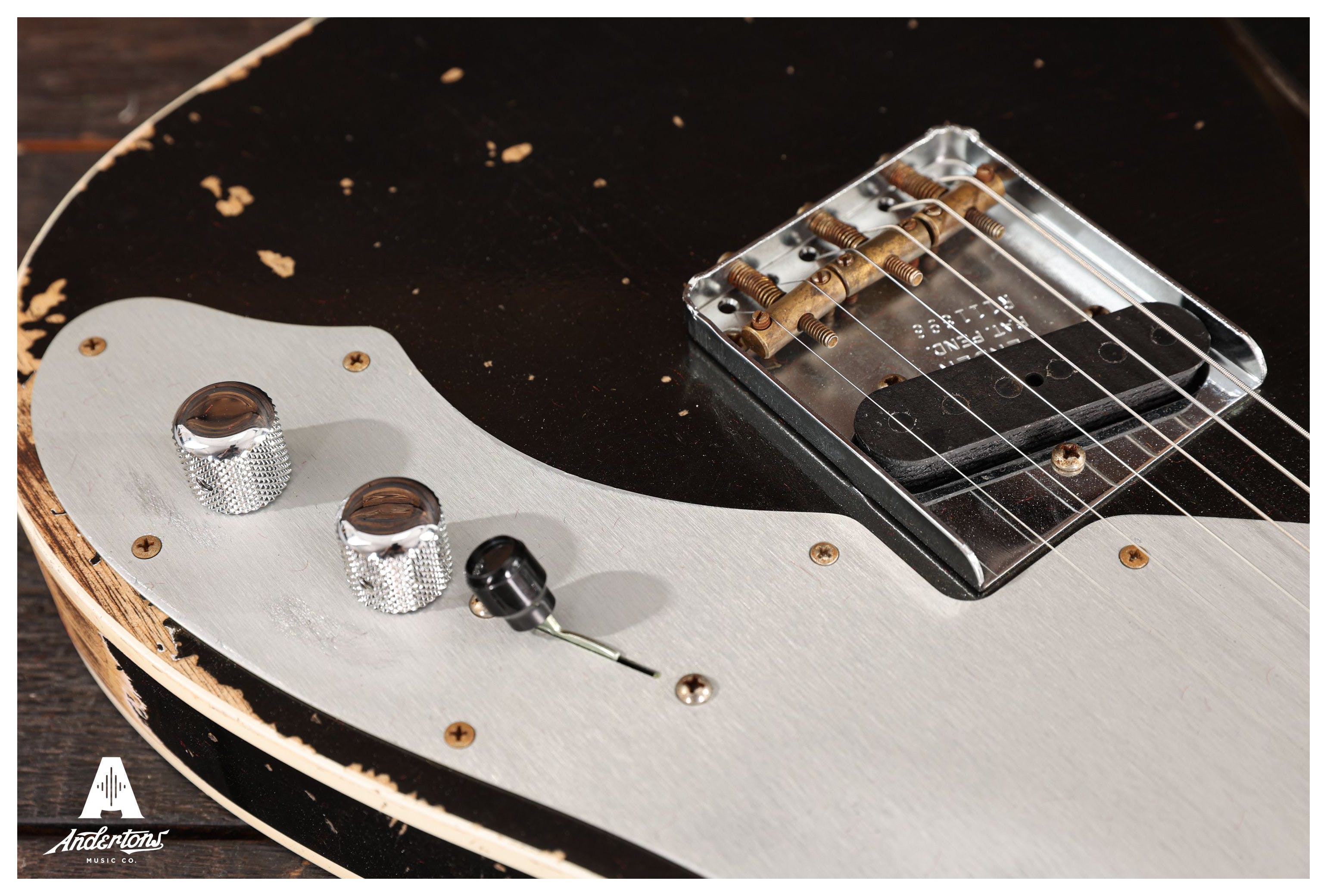
Telecaster Ashtray Bridge
Lastly, you don’t get the same creative tremolo options as you do with a floating bridge – but more on that later.
The Floating Bridge Explained
Floating bridges were first introduced on archtop guitars in 1951. The grand architecture of the Bigsby became the original commercially successful vibrato system and several versions were created, like the original single roller B3 for hollow body guitars and the B5 for Telecasters. In this setup, the strings are wrapped round a pivoting metal bar. Pressing down on the spring-loaded arm decompresses the strings, causing them to loosen and lower in pitch.
Fender stepped in with the Stratocaster in the mid-1950s. The block tremolo bridge (of which all floating bridges provide a vibrato effect rather than tremolo – blame Leo Fender for that) remains the single biggest influence on tremolo design to this day. Its “synchronized tremolo” allows the bridge saddles and string ends to move in one unit, eliminating the Bigsby’s detuning downsides caused by the friction of the strings against the roller bar. Fender updated their tremolo in the 1980s to a two-point system to further reduce friction.
A floating bridge gives players a way of achieving vibrato – pitch fluctuation – without bending the strings with your fingers on the fretboard. It also allows for larger pitch changes as you press or raise the tremolo arm more aggressively, adding another expressive tool to your sonic arsenal.
Advanced double locking tremolos such as the Floyd Rose became popular in the late 1970s and ‘80s, as rock and metal went through virtuoso and glam phases. Guitar greats like Steve Vai, Joe Satriani and Eddie Van Halen utilised these systems to their fullest extent, creating some of the most radical guitar music of the time.
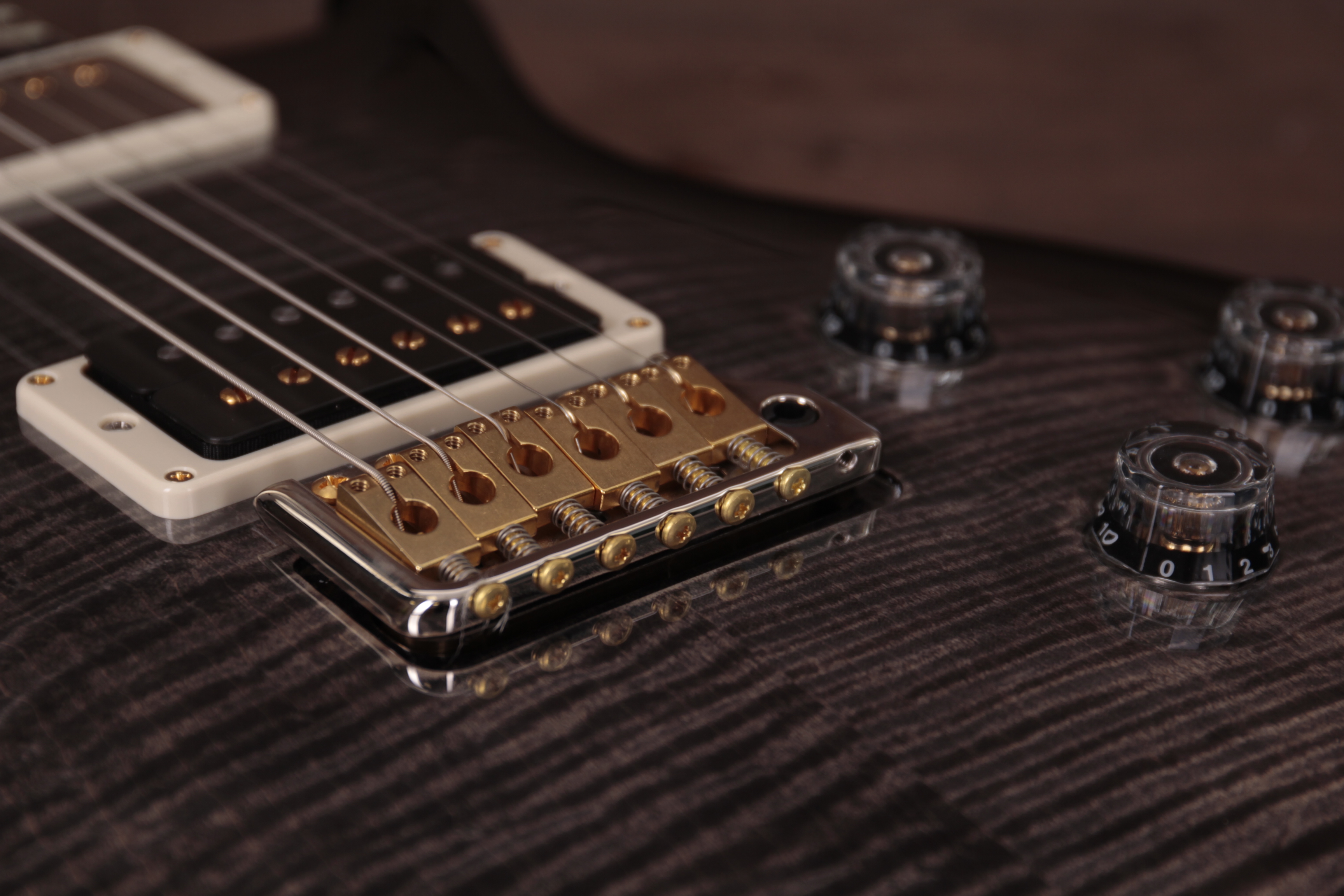
Pros of a Floating Bridge
The clear benefit of a floating bridge is the ability to expand your creative playing. With just a basic Strat-style trem bridge, you can add unique accents and smooth vibrato. Bulkier double locking systems like the Floyd Rose allow you to use vibrato more aggressively, performing divebombs as you push the arm all the way down, or sharp pitch flutters if you quickly tap the tremolo arm. The strings are locked in place not only at the bridge but at the locking nut too, so tuning slippage is minimal.
Most floating bridges are extremely comfortable for your picking hand as they have flatter surfaces to rest the side of your picking hand palm. Double locking tremolos keep your guitar stable and in tune for almost as long as you use the strings. If they do slip slightly out of tune, you’ve got fine wheel tuners at the bridge to get you back on point.
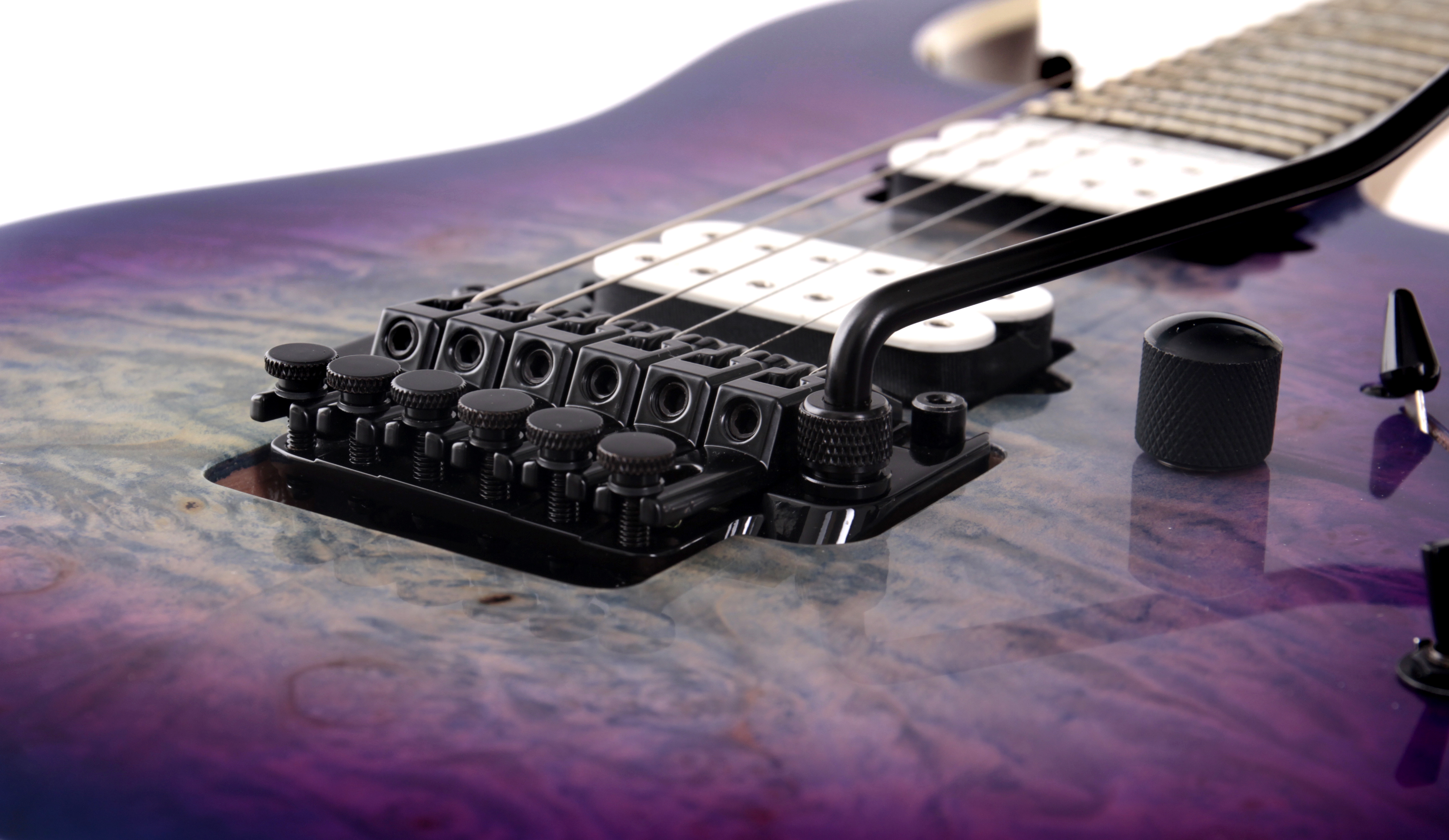
Cons of a Floating Bridge
Bigsby and Fender style floating bridges are a little more temperamental in tuning stability than a fixed bridge. You can’t perform extreme bends without the strings dipping out of tune, especially on guitars without top hardware.
Floating bridges may also be an issue if you palm mute a lot as an effect to get a tight, percussive sound commonly used in rock and metal. If you push down too hard with your palm, you’ll pull every note sharp or flat depending on the position of your hand so you’ll have to practice to avoid this situation – not always possible to negate depending on the style of music. You can counter this by setting up the bridge completely flat to the body of the guitar with a block between the tremolo system and the guitar body, or by adding extra strings within the system. However, this will completely limit the usage of the tremolo, effectively turning it into a fixed bridge.
Floating bridges can make string changes longer to carry out and quite tricky for beginners. Fender-style bridges and double locking terms use springs to keep the system suspended. The best method is to change strings one at a time, but this in turn makes cleaning the fretboard difficult.
Bigsby tremolos also take a little bit of getting used to as the strings are susceptible to falling out the holes when you pull them up to the tuner. Check out our article on how to change strings on a floating bridge guitar if you’d like to find out more about their inner workings.
Floating Bridge Brands
The double locking Floyd Rose floating tremolo systems feature on lots of guitars from the likes of ESP, Ibanez, Jackson, Charvel, Schecter and even the odd Fender – essentially anything you might consider as a metal or high-gain guitarist. They are without doubt the most acclaimed producer of the contemporary floating bridge and played a huge role in changing the way guitar has been played. Without them, Vai and Van Halen could not have pushed the envelope of what a guitar can do. Mid-priced guitars are often equipped with a Floyd Rose Special. The quality increases with the 1000 Pro and Original models as they are made with steel and brass instead of a zinc alloy.
ESP
Ibanez
Jackson
Fender, PRS and Ibanez all make their own tremolo bridges based on the two-point design. Vega-Trem and Babicz make aftermarket systems designed for easy installation on these guitars, both of which offer a fantastic smooth action for all your vibrato shimmies and flutters. Headless guitars can also be equipped with floating bridges but they need to be specially made for these instruments. Strandberg design and make their own systems for the Standard and Prog models.
Fender
PRS
Strandberg
Should You Buy A Guitar With A Floating or Fixed Bridge?
The best way to work out the ideal bridge for you is to try as many guitars as possible from a range of brands. As with most things in the guitar world, highly-rated bridges like Hipshot, Evertune and Floyd Rose notch greater prices. It is worth considering the investment in a quality bridge because it is such an important feature on a guitar for comfort, tuning stability and stylistic reasons.
I would not recommend adapting your fixed bridge guitar to accommodate a floating bridge unless you have extensive woodwork expertise, as it would require you to take huge chunks out the body of the guitar. But if you already have a guitar you love and would like to upgrade, consider the many brands that offer an entire range of aftermarket bridges.
If you enjoyed this read, check out our other Labs articles!



Responses & Questions